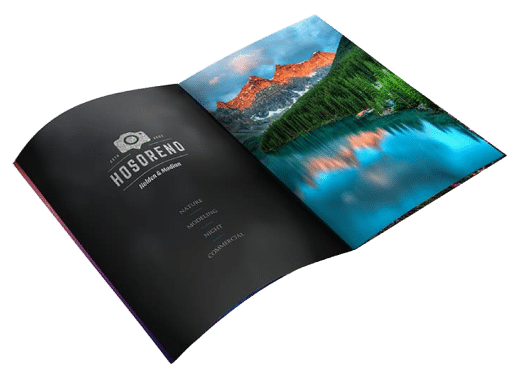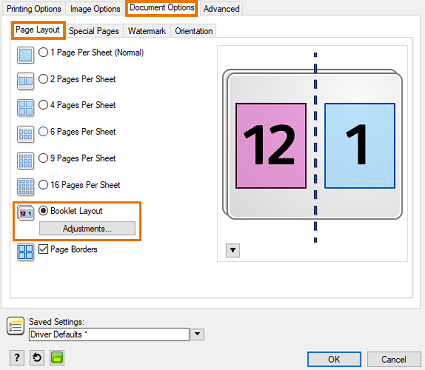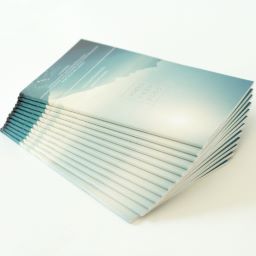Unlock the Power of Augmented Reality in Your Booklet Printing Projects
Unlock the Power of Augmented Reality in Your Booklet Printing Projects
Blog Article
The Important Guide to Understanding Booklet Printing Options and Techniques
The procedure of pamphlet printing involves several considerations that can considerably affect the last product. From selecting the appropriate style and dimension to comprehending the subtleties of binding techniques, each choice plays an important function. Furthermore, aspects such as paper supply and printing techniques more affect the performance of the pamphlet. As one navigates these options, it becomes essential to understand just how they adjoin and what that indicates for the general outcome.
Understanding Booklet Layouts and Sizes
When thinking about pamphlet printing, understanding the numerous layouts and dimensions available is important for achieving the desired presentation. Brochures can be generated in countless layouts, consisting of saddle-stitched, spiral-bound, and perfect-bound, each offering distinctive benefits. Common sizes vary from conventional letter (8.5 x 11 inches) to smaller choices like A5 (5.8 x 8.3 inches), allowing for adaptability based upon material and target audience.Selecting the proper dimension can affect both the design and reader interaction. Larger sizes could suit aesthetically driven content, while smaller sized formats might be extra mobile and straightforward. Furthermore, the variety of pages impacts the choice of binding technique, as thicker booklets might need sturdier bindings. Inevitably, understanding these facets enables for an extra customized technique, making sure that the final item straightens with the desired message and visual, enhancing the overall performance of the interaction.
Choosing the Right Paper Stock

Binding Methods: Alternatives and Factors To Consider
When it involves binding methods for booklets, a number of options are offered, each with distinctive benefits. Saddle stitch binding supplies a cost-effective service for thinner brochures, while excellent binding strategies supply an even more sleek search for thicker magazines. Wire-O binding stands apart for its sturdiness and simplicity of use, making it ideal for files that require adaptability.
Saddle Stitch Binding
Saddle stitch binding supplies a sensible and economical solution for assembling booklets, making it a popular choice among services and publishers. This binding technique involves folding sheets of paper in half and stapling them along the fold line, developing a well organized and cool look. Generally suitable for pamphlets with a reduced page matter, saddle stitching is suitable for publications, pamphlets, and educational products. The simpleness of this technique enables fast manufacturing and is typically preferred for brief runs or advertising things. Nevertheless, it is vital to note that saddle stitch binding may not appropriate for thicker pamphlets, as the spine might not hold up under raised weight. On the whole, it continues to be a trustworthy option for many printing projects.
Perfect Binding Techniques
Perfect binding is an extensively utilized method that supplies a expert and polished coating to pamphlets and publications. This technique includes gluing the pages with each other at the back utilizing a strong adhesive, permitting a clean side and the capability to hold a larger number of web pages compared to saddle sewing. Perfect binding is particularly ideal for thicker pamphlets, such as brochures and annual records, where a durable, flat back is desired. Furthermore, it provides the choice for a printed cover that can be created to improve aesthetic charm. Nevertheless, considerations such as web page count, paper weight, and the planned use the booklet need to be taken into consideration, as they can affect durability and general top quality.
Wire-O Binding Options
Wire-O binding, understood for its sturdiness and flexibility, provides an outstanding option for booklets that need easy web page turning and a specialist appearance. This binding technique utilizes a series of metal loopholes that hold pages securely, allowing them to exist level when open. It is particularly ideal for presentations, manuals, and magazines as a result of its durable nature. Wire-O binding is offered in different colors and diameters, suiting various page counts and thicknesses. In addition, it allows the addition of covers and tabs, enhancing the pamphlet's total visual. Considerations for Wire-O binding include the selection of cord color, the size of the loopholes, and the degree of personalization desired, every one of which can exceptionally influence the end product's look and capability.
Digital vs. Offset Printing: Which Is Best for You?
When choosing a printing method for pamphlets, comprehending the differences in between digital and counter printing is crucial. Digital printing uses modern innovation to create high-quality prints promptly and economically, making it ideal for brief runs or projects calling for fast turn-around times. It permits for modification, supplying the ability to publish on-demand with minimal waste.In comparison, offset printing is a typical method that masters creating huge quantities with constant quality. It includes moving ink from a plate to a rubber blanket, after that to the paper, which results in lively shades and accurate information. Nevertheless, offset printing usually calls for longer configuration times and is extra cost-effective for larger volumes.Ultimately, the selection between digital and balance out printing relies on project requirements, budget plan, and wanted amount. For little, time-sensitive tasks, electronic may be the most effective option, while balanced out might be better for bigger, top quality productions.

Designing Your Brochure: Tips and Finest Practices
When developing a booklet, careful focus to format, font style choice, and color use can greatly boost its performance. A well-structured design guides the viewers's eye, while ideal font styles guarantee readability and convey the wanted tone. Furthermore, efficient usage of shade can stimulate feelings and highlight key details, making the overall layout a lot more impactful.
Selecting the Right Layout
Just how can one successfully choose the appropriate design for a booklet? It is important to evaluate the brochure's purpose and target audience. A tidy, organized design enhances readability and involvement. Utilizing a grid system can assist in aligning components regularly, developing an expert look. Additionally, including visual power structure through differing dimensions and placements of photos and message can lead the reader's eye and stress key info. It is also important to leave enough white space, which stops congestion and allows for much better emphasis. Testing various designs with mock-ups can give understanding into how the design does in real-world circumstances, making certain that the final product meets both aesthetic and practical demands. Useful Picking Ideal Fonts
A well-chosen font can significantly improve the general style of a booklet, matching the design and reinforcing the content's message. The selection of fonts must consider readability, especially for body text, as it guarantees the information comes to all readers. Sans-serif fonts are frequently chosen for digital formats, while serif typefaces can offer a typical feeling in printed materials. It's advisable to restrict font selections to 2 or 3 to preserve visual comprehensibility. In addition, typeface size plays an essential role; headings should be not overwhelming yet unique, while body text should fit for reading. When picking typefaces, positioning with the booklet's motif and target market is vital for effective interaction and aesthetic appeal.
Reliable Use Color
Color offers as a powerful device in booklet layout, shaping assumptions and directing reader feelings. It can stimulate feelings of calmness, trust fund, or excitement, depending upon the tones selected. Designers need to consider color concept concepts, ensuring that the selected combination straightens with the booklet's message and target audience. As an example, making use of warm colors like red and orange can create seriousness, while cooler tones like green and blue foster tranquility.Additionally, contrast plays a crucial duty; corresponding colors can enhance readability and visual charm. Consistency in color usage across pages even more enhances brand name identity and cohesion. Eventually, efficient color application not only catches interest however also reinforces the booklet's function, making it an important element of successful design.
Finishing Touches: Coatings and Unique Results
While several take into consideration the web content and design of a brochure the most crucial elements, the finishing touches, such as coatings and unique impacts, play a vital function in enhancing its total allure. Coatings can supply security and resilience, ensuring that the pamphlet holds up against deterioration. Matte finishes offer an innovative, non-reflective surface, while glossy coatings can make shades appear even more lively and appealing. Unique effects, like embossing or aluminum foil stamping, include a tactile measurement that can produce a memorable impact. These methods can highlight specific locations, accentuating important details or producing aesthetic interest. In addition, UV finishing can provide a high-shine try here surface that elevates the general look.Together, these ending up touches not only enhance the pamphlet's visual however also interact professionalism and trust and attention to detail, inevitably leaving a long lasting influence on the reader.
Expense Considerations for Brochure Printing
Recognizing the various expense factors to consider for booklet printing is necessary for companies and businesses aiming to enhance their spending plans. Key aspects affecting prices include the option of ink, paper, and binding techniques. Better materials, such as premium paper or specialized inks, normally raise the overall expense. In addition, the size and page matter of the pamphlet play a significant function; bigger pamphlets call for even more resources and time to produce.Another important consideration is the printing method, whether digital or balanced out, as each has its own prices framework and viability for various quantities. Services must additionally consider style expenses, which can differ based upon intricacy and using specialist services. Ultimately, shipping and handling fees can contribute to the total, especially for huge orders. By reviewing these components, companies can make enlightened choices that Get the facts line up with their monetary capabilities while achieving the desired top quality in their published materials.
Often Asked Questions
What Are the Ecological Influences of Brochure Printing?
The environmental impacts of pamphlet printing consist of deforestation from paper production, carbon emissions from transport, and waste generation from disposed of materials - Booklet Printing. Lasting methods, such as utilizing recycled paper and environmentally friendly inks, can mitigate these results
Exactly How Can I Make Sure Shade Precision in My Pamphlet?
To guarantee color precision in a brochure, one need to use calibrated screens, use professional color accounts, carry out examination prints, and select premium printing solutions that provide shade matching and proofing options for best outcomes.
What Is the Typical Turnaround Time for Pamphlet Printing?
The normal turn-around time for booklet printing differs useful link depending upon the complexity and amount - Booklet Printing. Normally, it varies from a few days to 2 weeks, affected by variables such as printing techniques and completing demands
Are There Minimum Order Quantities for Brochure Printing?

Can I Publish Brochures in Numerous Languages?
Publishing pamphlets in numerous languages is possible. Several printing solutions use options for multilingual or multilingual designs, enabling reliable communication. Cautious planning warranties that design elements suit different languages without compromising readability or visual appeals. In addition, factors such as paper supply and printing methods more influence the efficiency of the brochure. When thinking about brochure printing, comprehending the various styles and sizes available is crucial for accomplishing the desired discussion. When picking a printing approach for brochures, understanding the distinctions between electronic and offset printing is necessary. Furthermore, the dimension and page count of the pamphlet play a considerable function; larger pamphlets require more sources and time to produce.Another vital consideration is the printing method, whether electronic or offset, as each has its very own rates framework and suitability for different quantities. The environmental effects of booklet printing consist of deforestation from paper production, carbon discharges from transportation, and waste generation from thrown out products.
Report this page